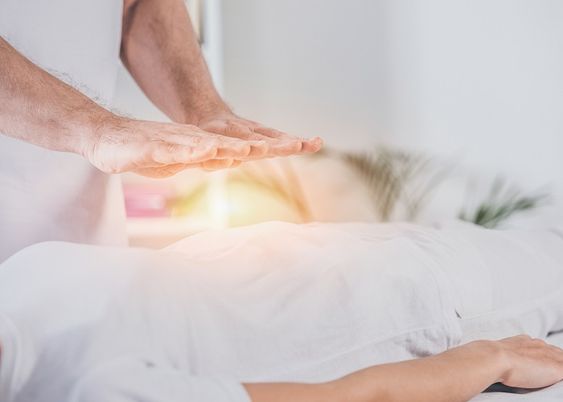Introduction
Reiki is a Japanese form of energy healing that promotes relaxation and reduces stress. It can be used to address a variety of ailments and imbalances, from physical pain to emotional distress. While traditionally practiced by trained practitioners, Reiki can also be practiced on yourself in the comfort of your own home.

Practicing Reiki at home offers a wonderful way to connect with your inner self and promote healing. It is a gentle yet powerful technique that can be integrated into your daily routine, allowing you to experience the benefits of Reiki whenever you need. This article will serve as a guide to help you understand the principles of Reiki and learn how to practice it on yourself.
Understanding Reiki Energy
Reiki is based on the idea that an unseen "life force energy" flows through us and is what causes us to be alive. If your life force energy is low, you are more likely to become ill or feel stress. When it is high and flowing freely, you are more capable of being happy and healthy. During a Reiki session, a practitioner will act as a conduit for this energy, channeling it to the recipient through gentle touch. When practicing Reiki on yourself, you will learn to channel this energy to yourself.
Creating a Peaceful Healing Space
Before you begin your Reiki practice, it's important to create a peaceful and inviting space. Choose a quiet area in your home where you can relax without distractions. Consider dimming the lights, lighting candles, or diffusing essential oils to enhance the ambiance. You can also incorporate calming elements like crystals or plants to create a serene atmosphere.
Techniques for Self-Reiki Healing
There are various techniques for practicing Reiki on yourself. Here are a few simple steps to get you started:
- Centering and Grounding: Sit or lie down comfortably, close your eyes, and take a few deep breaths. Focus on your breath and allow yourself to become present in the moment.
- Setting an Intention: Before you begin, set an intention for your Reiki session. What do you hope to achieve? Are you seeking relaxation, pain relief, emotional healing, or overall well-being?
- Hand Positions: There are specific hand positions you can use on yourself during your practice. You can place your hands on different parts of the body, starting from the head and moving down to the feet. Some common positions include placing your hands on your eyes, ears, throat, heart, stomach, and lower abdomen.
- Flowing Energy: Visualize Reiki energy flowing from your hands into your body. You can imagine it as a warm, radiant light or a gentle, loving energy.
As you continue practicing Reiki at home, you'll develop a deeper understanding of the sensations and energy flow that work best for you. Remember to approach your practice with an open mind and a compassionate heart.





